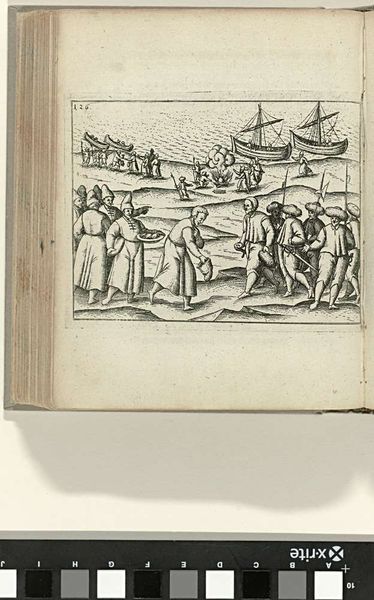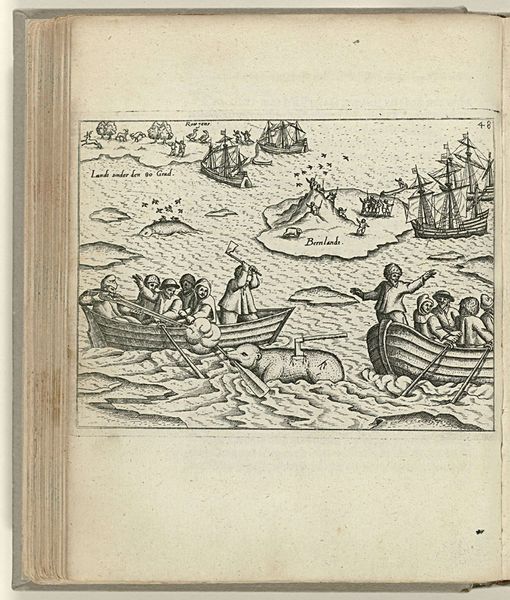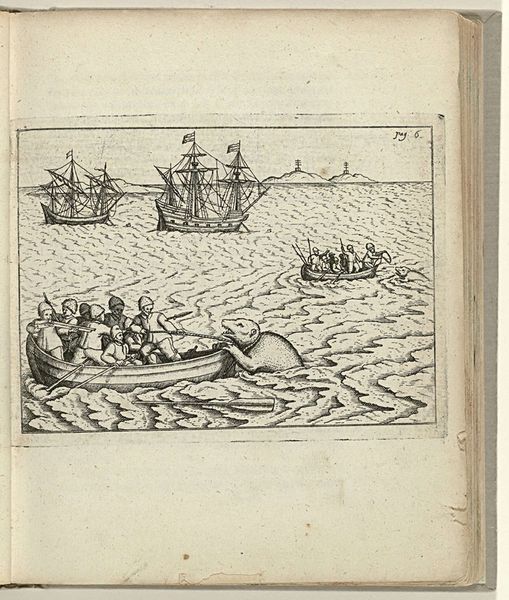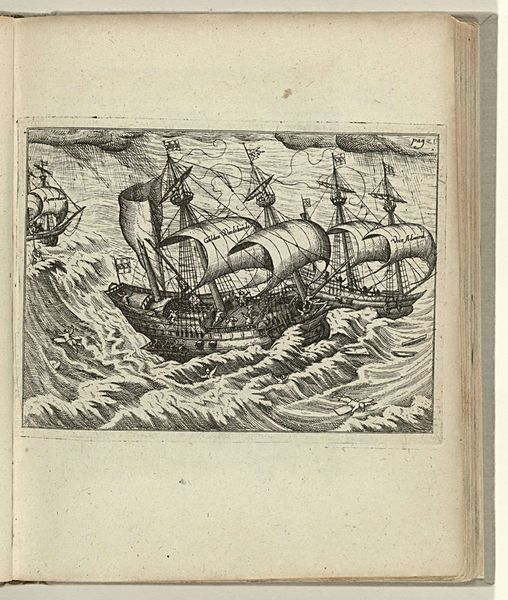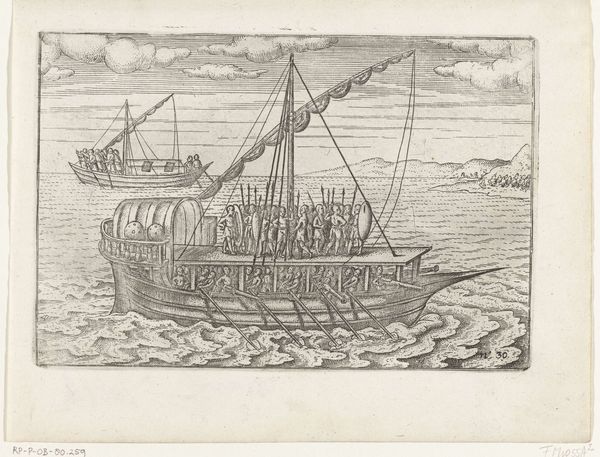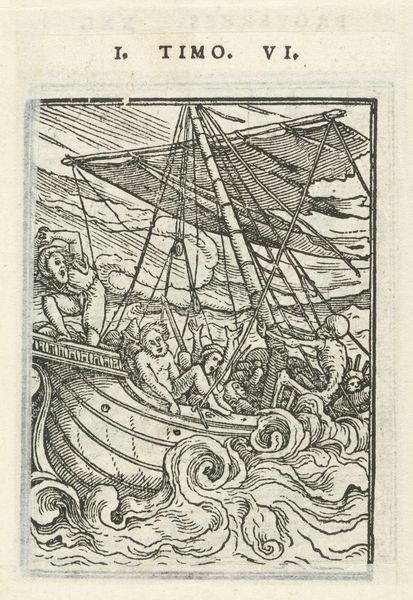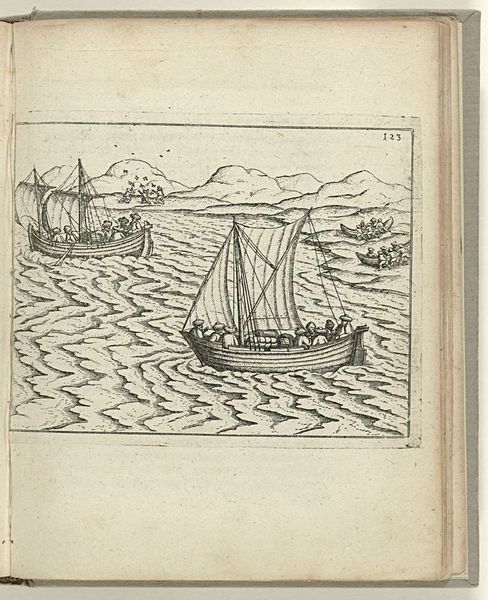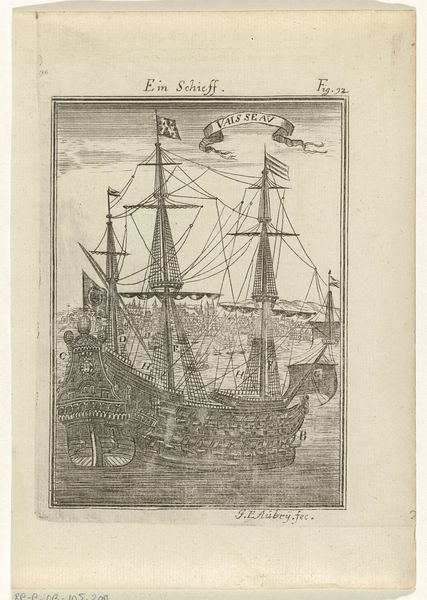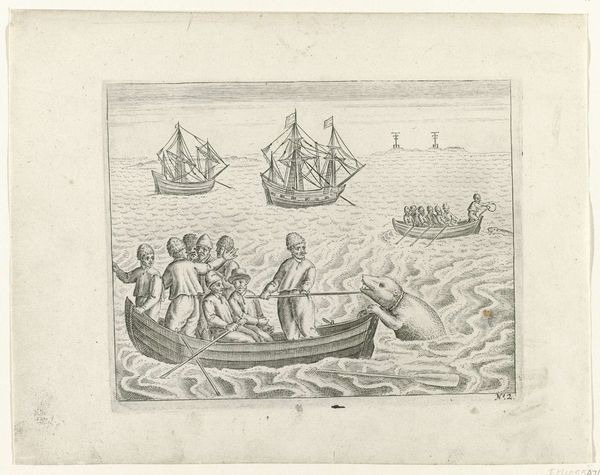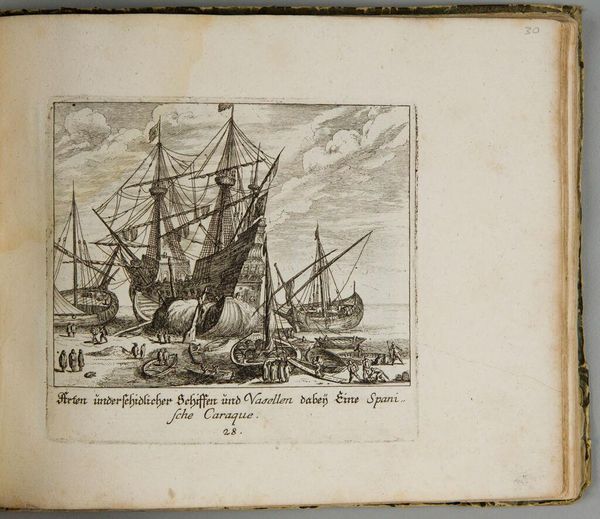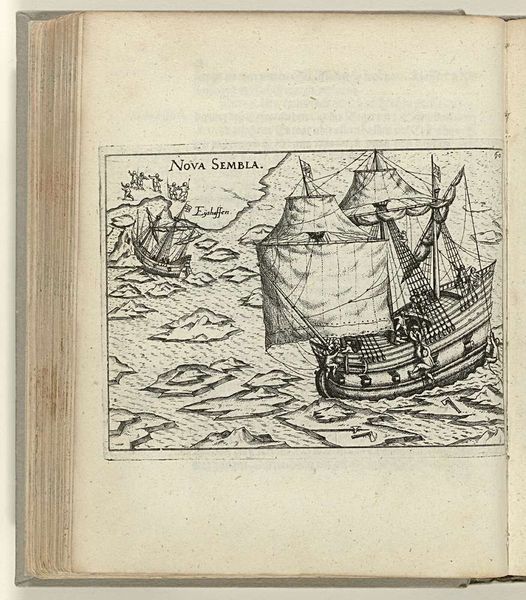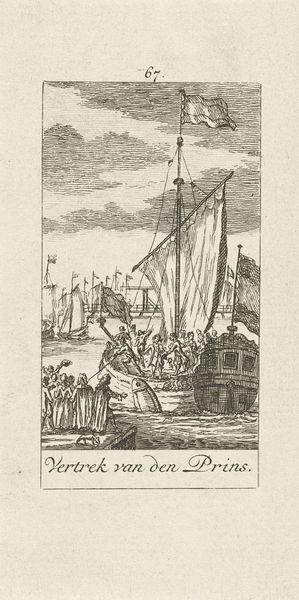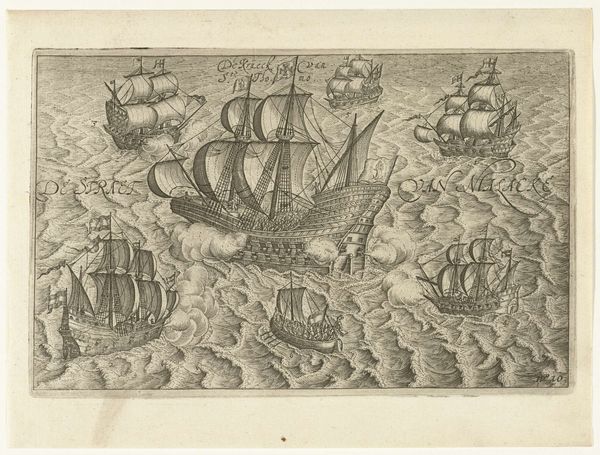
print, woodcut, engraving
#
narrative-art
# print
#
old engraving style
#
11_renaissance
#
woodcut
#
line
#
history-painting
#
northern-renaissance
#
engraving
Dimensions: height 105 mm, width 145 mm
Copyright: Rijks Museum: Open Domain
Curator: This is "Ontmoeting met een Russische lodja op zee, 1597," an engraving made around 1598, currently held here at the Rijksmuseum. It depicts an encounter at sea between what appears to be Dutch ships and a Russian "lodja," a type of trading vessel. Editor: There’s something about the starkness of the lines in this print that gives it a chilling quality. The ships bobbing on this patterned sea, with those bare, slightly menacing mountains in the background… It almost feels apocalyptic. Curator: Well, considering the context, the meeting between these disparate ships points toward intersectional political and economic narratives. This image represents the expansion of Dutch trade into Russian territories, influencing both cultures. The print itself functions as a symbolic marker of this particular cultural and mercantile exchange. Editor: Right, because the creation of the print would also require skilled labor – the engraver, the paper maker. Each line in the engraving represents someone's effort, even the tools. I’m curious about where this print was originally circulated; to whom? Were these images intended to promote or record these ventures? What does the medium itself tell us about its message? Curator: That's key. As a printed image, it allowed for widespread dissemination of a specific version of this "meeting." Think about the politics of representation – who controls the narrative about this encounter and how the respective cultures are portrayed. Who has access to this technology to propagate a given viewpoint? Editor: The water, the ships – even the bodies of those sailors – they all come from raw materials, like copper for the plate. Trade created the materials that became the art that described the trade; fascinating and telling. Curator: Precisely. Understanding that these historical images and encounters are intrinsically linked to larger historical shifts like early globalization and colonialism makes all the difference in our understanding. Editor: Indeed. When we look at art through a material lens, we expose layers of societal influence and intent that aren't always immediately visible. Thanks! Curator: And you've reframed my perception once again, making me question the layers of narrative. Thanks!
Comments
No comments
Be the first to comment and join the conversation on the ultimate creative platform.
